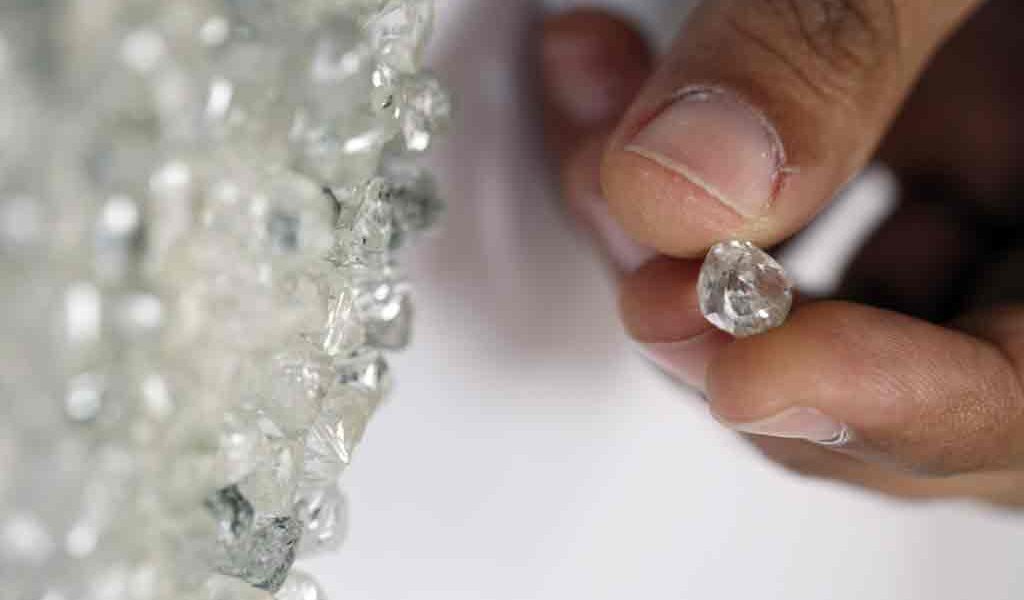Sheila Khama, lead mining specialist, energy and extractive industries, global practice World Bank leads the discussion on ‘Creating a stable economically viable future for the diamond industry in Africa’ at Mining Indaba in Cape Town, on 7th February 2018.
Sheila Khama: How do you see the Kimberley Process contribution to responsible sourcing of gem diamonds?
HE Sadique Kebonang, minister of minerals: I think it’s safe to say through the Kimberley Process we have seen the elimination of illicit diamond trading. As we stand, 99 per cent of the diamond that has been traded is free from illicit trading and we think the Kimberley Process (a government-led certification scheme which unites administrations, civil societies, and industry in reducing the flow of conflict diamonds) has helped in this process and continues to help. It is our view that once we share the same objectives, we will able to achieve much more.
Sheila Khama: What does the role of private corporations mean in improving the Kimberley Process and something about nation states are not able to address?
Bruce Cleaver: Firstly, just to add to what the minister said, we are enthusiastic supporters of the Kimberley Process. We have been involved with it in the tripartite way. Governments, industry and NGOs have been involved from the very beginning and it has evolved and served its purpose in regard to the statistic that the minister mentioned. For us though, we think that industry should go beyond the Kimberley Process, bearing in mind the consensus nature of the Kimberley Process.
In the industry and in De Beers, we’ve focused since the launch of the Kimberley Process on how we take on the Kimberley Process and make it even better. We are very proud of a set of standards called Best Practice Principles, which are standards which don’t just require the people upstream on the mining side but also our customers in the middle and downstream end.
All our major contractors sign up and agree with ethical standards that cover not just the Kimberley Process but also the human rights, labour, environment and ethical business practices. We have made our customers and their customers to comply with this. We have improved the lives of 350,000 workers in the diamond industry in the whole value chain since the beginning of the Kimberley Process. We also have seen other industry bodies taking something of the Kimberley Process and expand it and cover more emerging issues.
Sheila Khama: Botswana is only a handful of countries that the World Bank classifies as a middle-income country. What does sustainable mining mean for your country’s economy?
HE Sadique Kebonang, minister of minerals: For us, sustainable development means that we have to take into account the interest of the current generation with the interest of the future generation in order to come up with a balance. Therefore, whatever we do, we have to make sure that is sustainable. It is meant not only for now and to take into account tomorrow. It means safe mining standards
We have to make sure that we use the funding, the money from the endowment revenues, for the future and invest in development. That means we will still have money when mining is finished and we have other resources, which we have been able to get thanks to the sustainable mining activities.
Are manmade substances a threat to your industry? Can we presume that somewhere in the future that diamonds might be substituted for other substances?
Bruce Cleaver: It is possible to manufacture synthetic diamonds in a laboratory which are at least to the naked eye the same as natural diamonds despite being very different. Firstly, I think that it is important to state that this issue of synthetics is not new. It’s been around in the industry for 10-15 years. There are two types of synthetic diamonds. The first one is called undisclosed where people manufacture and try distribute the diamonds without disclosing it.
At De Beers we have invested strongly in technology which has allowed us to continue to detect on a 100 per cent basis a synthetic diamond to a natural one, so I don’t think that there is concern there. There is another part of the synthetic question that you are asking, which is the sale of synthetics which is disclosed and we don’t think there is an issue with people selling disclosed synthetics. For us though ultimately, there is a big difference between a synthetic and natural diamond. They don’t occupy and will not occupy in the future the same space in the consumer’s mind.
The natural diamond has a tremendous value and emotional value. It is one of those really precious things which is given to celebrate life’s great moments; an engagement, a partnership, a birth of a child, an anniversary, a great promotion etc. It is so powerful because it is so emotional and it is so emotional because it is real and rare because they are difficult to find.
The other side to that, is the synthetic issue, effectively you can manufacture a synthetic over six weeks. We think that consumers will find a place for synthetics which will be fashion jewellery. They are something which is fun and fashionable but something which is not at all the same as the natural. The reason for that is because it was made in six weeks. It can’t be the same as a natural diamond, which is so rare and was made by the miracle of nature between one and four billion years ago.
SOURCE: Africa Review
De Beers And Botswana’s Diamond Affair

